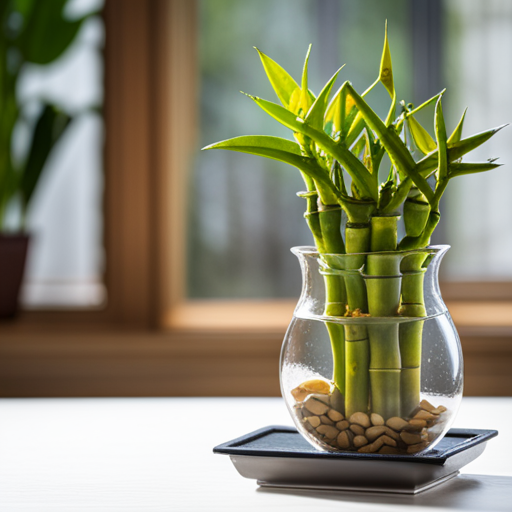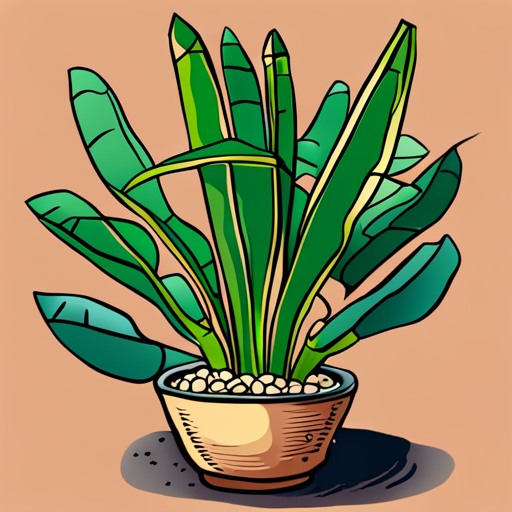On average, Lucky Bamboo has a lifespan of one to two years, but with proper care, it can live up to a decade, although this is less common. Various factors influence the plant’s longevity, including light, soil, water, temperature, humidity, and fertilizer.
Providing bright but filtered light, maintaining moist but not over-saturated soil, and using chemical-free water are essential for its well-being. Additionally, keeping the plant in a temperature range of 65-90 degrees Fahrenheit (18-32 degrees Celsius) with average humidity and fertilizing every other month help promote its longevity.
It is important to note that Lucky Bamboo is toxic to pets, so it should be kept out of their reach. By following these care and maintenance tips, individuals can enjoy the beauty of Lucky Bamboo for an extended period.
Contents
Our Highlighted Points
- Lucky Bamboo has a lifespan of around one to two years, but can potentially live up to a decade with proper care.
- Factors such as light, soil, water, temperature, humidity, and fertilizer influence the lifespan of Lucky Bamboo.
- Lucky Bamboo requires bright but filtered light, moist soil, and water free of chemicals like fluoride and chlorine.
How long does it live?

The lifespan of a Lucky Bamboo plant typically ranges from one to two years, although it can potentially live for up to a decade with proper care and conditions (Gardenguides).
Common diseases and pests that can affect Lucky Bamboo include spider mites, aphids, and root rot. To prevent these issues, it is important to keep the plant in a clean environment, avoid overwatering, and inspect the leaves regularly for any signs of pests or diseases.
In terms of display, Lucky Bamboo can be creatively showcased in various ways. Some popular options include placing it in a decorative vase filled with water and stones, arranging it in a terrarium, or using it as a centerpiece in a living room or office space. These creative displays not only enhance the aesthetic appeal of the plant but also contribute to the positive energy and good luck it is believed to bring.
Factors affecting lifespan

Factors such as light, soil quality, water availability, temperature, humidity levels, and fertilizer usage significantly influence the longevity of a Lucky Bamboo plant. To ensure the maximum lifespan of a Lucky Bamboo plant, consider the following factors:
- Light: Lucky Bamboo requires bright but filtered light. Avoid exposing it to direct sunlight, as it can scorch the leaves.
- Soil: The soil should be moist but not saturated. Use a well-draining potting soil to prevent waterlogging and root rot.
- Water: Tap water should be free of chemicals like fluoride and chlorine. Let it rest for 24 hours or use distilled or bottled water. Keep the rocks and roots submerged in water, changing it weekly to prevent mold and algae growth.
- Temperature and Humidity: Lucky Bamboo thrives in temperatures between 65-90 degrees Fahrenheit (18-32 degrees Celsius) with average humidity. Avoid drafty places like windows, heating vents, or air conditioners.
By following these tips, you can prolong the lifespan of your Lucky Bamboo plant and enjoy its good luck charm for years to come.
Care and maintenance tips

To ensure optimal growth and health, it is important to provide proper care and maintenance for a Lucky Bamboo plant. This includes paying attention to fertilizing frequency and watering schedule. Lucky Bamboo should be fertilized with one drop of liquid plant fertilizer every other month to avoid over-fertilization. This will provide the necessary nutrients for the plant’s growth. When it comes to watering, the soil should be kept moist but not saturated. It is recommended to use tap water that has been allowed to rest for 24 hours, or distilled or bottled water, to remove chemicals that may harm the plant. Additionally, the water in the tray or vase should be changed weekly to prevent mold and algae growth. By following these care and maintenance tips, the lifespan of a Lucky Bamboo plant can be extended.
| Fertilizing Frequency | Watering Schedule |
|---|---|
| Every other month | Weekly |
What Factors Can Affect the Lifespan of Indoor Plants Like Lucky Bamboo and Polka Dot Plants?
The key to understanding the polka dot plant lifespan insight lies in several factors. Light, water, temperature, and maintenance are crucial to the longevity of indoor plants like lucky bamboo and polka dot plants. A lack of proper care can significantly affect their lifespan, so attention to these details is essential.
Frequently Asked Questions
Can Lucky Bamboo be grown outdoors?
Growing lucky bamboo outdoors is possible in certain climates. Outdoor care involves providing filtered sunlight, well-draining soil, and regular watering. Benefits include larger and stronger plants, improved air purification, and a more natural growth habit.
Is it normal for Lucky Bamboo to change color?
Lucky Bamboo can change color due to the effect of temperature. When exposed to extreme temperatures, the leaves may turn yellow or brown. Other common causes of color change include water quality, light exposure, and nutrient deficiencies.
Can Lucky Bamboo be grown in a fish tank?
Growing lucky bamboo in a fish tank can be beneficial as it provides a unique and visually appealing display. It requires proper care, including water changes, adequate lighting, and regular fertilization, to ensure its health and longevity.
Can Lucky Bamboo be propagated from cuttings?
Propagation of lucky bamboo is possible through cuttings. To grow lucky bamboo from cuttings, select a healthy stem and cut it at a 45-degree angle. Place the cutting in water until roots develop, then transfer it to a pot with well-draining soil.
Can Lucky Bamboo survive in low light conditions?
Lucky Bamboo can survive in low light conditions, but it prefers bright, indirect light. To maintain it in low light, place it near a window with filtered light. Avoid direct sunlight and provide consistent watering and regular fertilization.

